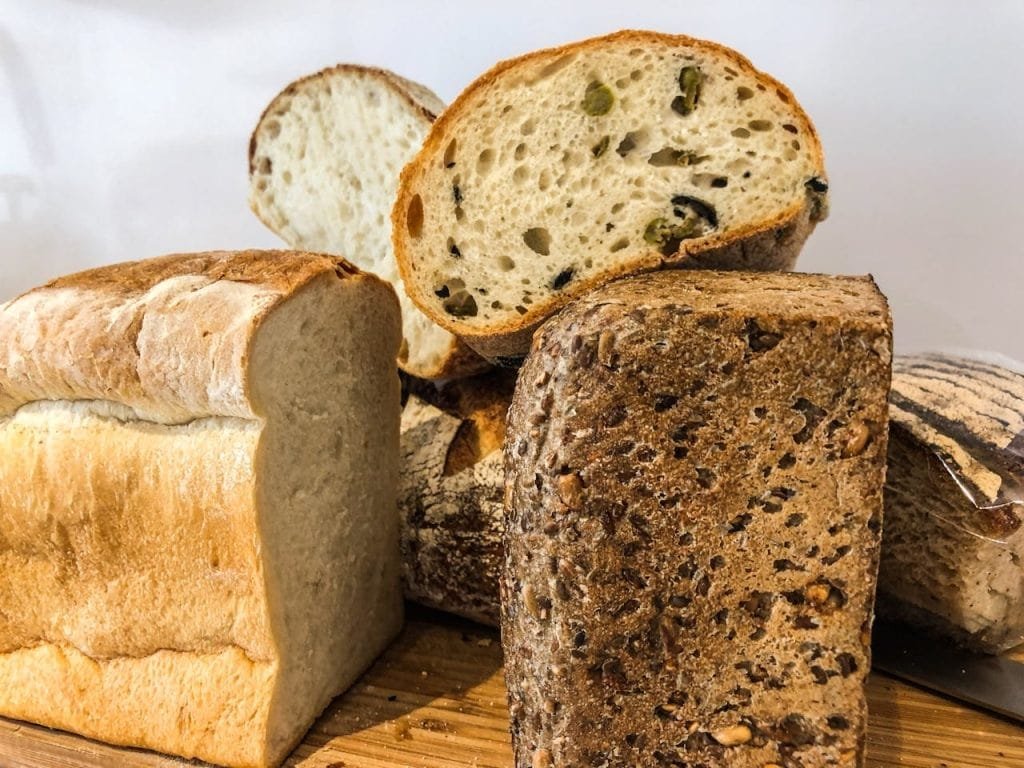Pasta is everyone’s favourite comfort food, but regular pasta is normally made from refined white flour, which removes most nutrients. Like all foods, choosing the least processed and most nutritious pasta is a good idea.
Like many, I used to rely on whole wheat pasta for its health benefits. My perspective changed when I heard about the nutritional value of red lentils and buckwheat pasta. Let’s explore the healthiest pasta according to the nutrition and Glycemic index of the five most popular pasta types: regular (durum wheat semolina), whole wheat, red lentil, buckwheat, and brown rice pasta.
Different Pasta Nutritional Value:
Let’s compare the nutrition per 100g of cooked pasta to see what pasta is the healthiest nutrition vice:
| Nutrient | Regular Pasta | Whole Wheat Pasta | Red Lentil Pasta | Buckwheat Pasta | Brown Rice Pasta |
|---|---|---|---|---|---|
| Calories | 131 kcal | 124 kcal | 135 kcal | 113 kcal | 111 kcal |
| Protein | 5 g | 5.3 g | 11 g | 4 g | 3 g |
| Total Fat | 0.65 g | 0.54 g | 0.8 g | 0.8 g | 0.9 g |
| Carbohydrates | 25 g | 26.5 g | 21 g | 24 g | 24 g |
| Fiber | 1.2 g | 3.9 g | 6 g | 2 g | 1.5 g |
| Iron | 0.8 mg | 1.2 mg | 1.5 mg | 0.6 mg | 0.4 mg |
| Calcium | 8 mg | 17 mg | 18 mg | 8 mg | 10 mg |
| Gluten Content | Contains gluten | Contains gluten | Gluten-free | Gluten-free | Gluten-free |
Pasta Nutritional Differences:
Protein: Red lentil pasta stands out with significantly higher protein content, which is great for muscle repair and growth.
Fiber: Red lentil pasta also leads in fiber content, which is helpful for digestion and maintaining a feeling of fullness.
Calories and Carbohydrates: While calorie content is similar across all types of pasta, the type of carbohydrates varies, with whole grains and legumes providing more complex carbohydrates and dietary fiber.
Minerals: Whole wheat and red lentil pastas provide more calcium and iron, which are important for bone health and oxygen transport in the blood.
Gluten Content: Regular and whole wheat pastas contain gluten, making them unsuitable for those with gluten sensitivities or celiac disease, whereas red lentil, buckwheat, and brown rice pastas are gluten-free alternatives.
So What is the healthiest pasta nutrition vice?
Each type of pasta has unique nutritional attributes that can contribute beneficially to a diet. Here’s a breakdown of some unique nutrients in each pasta type:
REGULAR PASTA
Selenium: Regular pasta is a good source of selenium. This antioxidant helps with thyroid function and boosts the immune system.
Manganese: Essential for bone health and metabolism.
WHOLE WHEAT PASTA
Magnesium: Higher in magnesium than regular pasta, which is crucial for muscle and nerve functions and energy production.
B Vitamins: Particularly rich in B vitamins like niacin, thiamine, and folate, which help with energy production and cell health.
“Whole-grain pasta offers a better nutritional profile with higher protein and antioxidant levels than refined pasta, despite having a shorter optimal cooking time and harder texture.” (1)
RED LENTIL PASTA
Protein: Higher in protein, making it ideal for muscle repair and growth.
Iron: Higher iron content is essential for blood health and oxygen transport.
BUCKWHEAT PASTA
Rutin: Contains rutin (2), a flavonoid that improves circulation and prevents blood clots.
Quercetin: It has anti-inflammatory properties and might help reduce swelling, help with blood sugar content, and help prevent heart disease and cancer (3).
BROWN RICE PASTA
Manganese: Like regular pasta, but generally in a higher amount, which is crucial for bone health and metabolic function.
Choline: Important for liver function, brain development, nerve function, muscle movement, and metabolism.
Each type of pasta offers unique benefits. Choosing the healthiest pasta might depend on your dietary needs (e.g., gluten-free), nutritional goals (higher protein or fiber), or simply taste preference. Red lentil pasta is an excellent choice if you are looking to increase protein and fiber intake, while whole wheat remains a great all-around healthier alternative to regular pasta. Buckwheat and brown rice pasta offer gluten-free alternatives with slightly different nutritional profiles.
Pasta glycemic index
If you are worried about your sugar levels, here’s a table that compares the glycemic index (GI) values for different types of pasta. The glycemic index measures how quickly a food raises blood sugar levels, with a lower value indicating slower digestion and a lesser impact on blood sugar.
The general classifications are as follows: low GI (55 or less), medium GI (56-69), and high GI (70 or higher).
| Pasta Type | Glycemic Index (Approximate) | GI Category |
|---|---|---|
| Regular Pasta | 45-50 | Low |
| Whole Wheat Pasta | 40-50 | Low |
| Red Lentil Pasta | 35 | Low |
| Buckwheat Pasta | 45-50 | Low |
| Brown Rice Pasta | 55-65 | Medium |
Pasta Glycemic Index Insights:
Low-GI Pastas: Regular, Whole Wheat, Red Lentil, and Buckwheat pastas are low-GI, which is beneficial for more stable blood sugar control.
Medium-GI Pastas: Brown Rice Pasta is classified under medium-GI, indicating a faster rate of blood sugar increase after eating it.
What else affects the GI of pasta?
Cooking Method: Cooking pasta until it is “al dente” is better for blood sugar control than cooking it until it’s very soft. Overcooking pasta makes it softer and increases its GI because the body can digest it more quickly.
Meal Composition: Combining pasta with other foods can help minimise its impact on blood sugar. Including a source of protein (like tofu), healthy fats (like olive oil), and additional fibre (from vegetables) in your pasta dish can help slow the overall digestion and absorption of glucose.
Healthiest pasta Summary
Each pasta type has different nutritional benefits so that you can choose based on health needs or dietary restrictions.
For example,
You might prefer whole wheat pasta for its high fibre and B-vitamin content, which support overall metabolic health.
Red lentil pasta is a good choice because it contains higher protein and iron levels. It is especially suitable if you follow a plant-based diet and need to monitor your iron levels.
Buckwheat pasta is a good option for boosting heart health due to its unique flavonoid content.
By understanding the distinct nutritional profiles of each pasta type, you can make more informed choices that suit your dietary goals and choose the healthiest pasta for you. I like to mix pasta and eat a variety of lentils, whole wheat, and buckwheat pasta to ensure I get various nutrients and flavours on different days.
What is your favourite pasta? Have you found the healthiest pasta for you and your dietary needs?
If you don’t know what Oats are the best, you can also read: HOW TO CHOOSE THE BEST OATS FOR YOU
Want to learn more about legumes? Read this article: WHAT ARE THE BEST LEGUMES FOR YOU? FULL NUTRITION GUIDE
Please Note: This post is for informational purposes only and is based on research. It’s not medical advice. It’s always best to consult with a healthcare professional if you have health concerns. Enjoy reading!
- Vignola, M., Bustos, M., & Pérez, G. (2018). Comparison of quality attributes of refined and whole wheat extruded pasta. Lwt – Food Science and Technology, 89, 329-335. https://doi.org/10.1016/J.LWT.2017.10.062.
- Ganeshpurkar, A., & Saluja, A. K. (2017). The Pharmacological Potential of Rutin. Saudi pharmaceutical journal : SPJ : the official publication of the Saudi Pharmaceutical Society, 25(2), 149–164. https://doi.org/10.1016/j.jsps.2016.04.025
- Anand David, A. V., Arulmoli, R., & Parasuraman, S. (2016). Overviews of Biological Importance of Quercetin: A Bioactive Flavonoid. Pharmacognosy reviews, 10(20), 84–89. https://doi.org/10.4103/0973-7847.194044
Silvija Meilunaite PN1-NC, is a certified nutrition coach and a writer in the nutrition and self-improvement field with a passion for exploring science-based knowledge focusing on holistic health and plant-based nutrition.
Featured in the Wellness on Time magazine.
- S. Meilunaitehttps://barefootbasil.com/author/silvootegmail-com/
- S. Meilunaitehttps://barefootbasil.com/author/silvootegmail-com/
- S. Meilunaitehttps://barefootbasil.com/author/silvootegmail-com/
- S. Meilunaitehttps://barefootbasil.com/author/silvootegmail-com/




